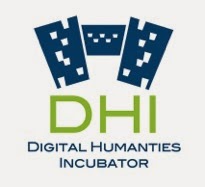Digital Densities: examining relations between material cultures and digital data
Call For Papers
27th March 2015, The University
of Melbourne
Hosted by the Digital Humanities Incubator
(DHI) in the School of Culture and Communication, University of Melbourne.
The ‘material turn’ in Humanities research
has seen a celebration of the physicality of things and a revaluing of the
weight of experience, including in the case of digital data. In his key text Mechanisms,
Matthew Kirschenbaum identifies a need to reassess theories of electronic
textuality in light of “the material matrix governing writing and inscription
in all forms: erasure, variability, repeatability and survivability” (2008,
xii). In the academy, this material turn co-exists with an increasing utilization
of digital resources and digital methodologies to preserve and disseminate the
findings of our research. These shifts are accompanied by divergent affective
responses that include an interest in tactile sensations and a mourning of the
loss of the object. There is a new awareness of the forms of lightness or
weight attached to the transmission of ideas in and beyond our research
communities; the densities of our culture and scholarship. The ever more
numerous moments of contact between material culture and digital methodologies
open up debates that are of both practical and theoretical significance.
We invite papers that explore any aspect of
the intersection between digital and material cultures. We warmly encourage proposals
from scholars with a range of disciplinary backgrounds as well as from archival
practitioners. Topics and questions to be addressed might include:
- What are the critical practices in the
intersection of digital humanities and the material turn?
- Where are the material traces in the digital? What labour is involved in the transitions between the material and the digital?
- How do material and digital objects, practices and networks interrelate?
- What is lost in translations from material to digital, and what is gained?
- What is it that archives seek, and are able, to preserve?
- What are the political and territorial disputes of material conservation?
- How are creativity, meaning and contemporary resonance expressed in museums, libraries and archives?
- What material, theoretical and ethical challenges are posed by the collection and use of data?
- Case studies of particular archival collections and the relationships they create between the material and the digital.
- What are the opportunities and limitations for pedagogy?
- How have contemporary representations imagined the digital transformation of contemporary cultures?
- Where are the material traces in the digital? What labour is involved in the transitions between the material and the digital?
- How do material and digital objects, practices and networks interrelate?
- What is lost in translations from material to digital, and what is gained?
- What is it that archives seek, and are able, to preserve?
- What are the political and territorial disputes of material conservation?
- How are creativity, meaning and contemporary resonance expressed in museums, libraries and archives?
- What material, theoretical and ethical challenges are posed by the collection and use of data?
- Case studies of particular archival collections and the relationships they create between the material and the digital.
- What are the opportunities and limitations for pedagogy?
- How have contemporary representations imagined the digital transformation of contemporary cultures?
The symposium will run for one
day. Proposals for 20 minute papers should contain an abstract of 150 words, as
well as your paper title, a short biography (100 words), institutional
affiliation and contact details. Proposals should be submitted by 4th February 2015 to amandat@unimelb.edu.au
The Digital Humanities Incubator (DHI) is an initiative
of the School of Culture and Communication at the University of Melbourne, and
is supported by a collaborative Faculty of Arts Research Grant.











